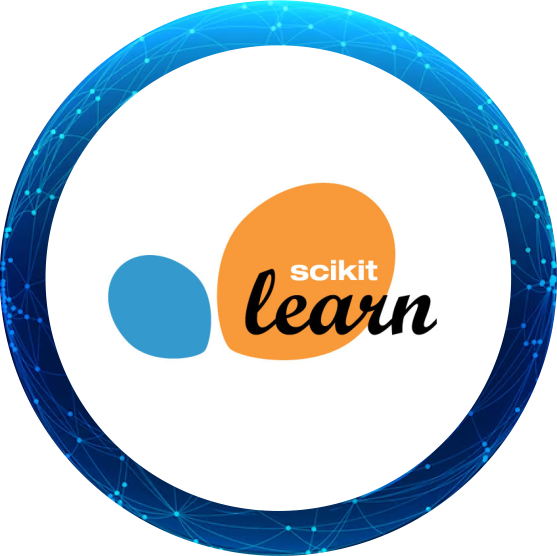MACHINE LEARNING


in Data Science and AI
Machine Learning (ML) automates decision-making, enabling systems to learn from data without explicit programming.
It is a core engine of AI, powering applications like recommendation systems, image recognition, and predictive analytics.
ML algorithms can uncover hidden patterns and correlations in massive datasets that are impossible for humans to detect manually.
It enables predictive modeling, which helps businesses forecast trends and customer behaviors.
ML is used extensively in healthcare, finance, marketing, robotics, and cybersecurity, making it essential for real-world applications.
It supports natural language processing (NLP), speech, and vision tasks, enabling intelligent assistants, chatbots, and self-driving cars.
In Data Science, ML is the logical next step after data preprocessing and visualization, turning insights into actionable intelligence.
Mastery of ML tools like Scikit-learn, TensorFlow, and PyTorch enhances a data scientist’s ability to solve diverse and complex problems.
ML is key to building adaptive systems that improve their performance over time.
The field promotes a mindset of data-driven experimentation and innovation, critical for modern AI development.

Module 1: Introduction to Machine Learning
What is ML?
ML vs AI vs Deep Learning
Applications of ML in the real world
Types of ML:
Supervised
Unsupervised
Semi-supervised
Reinforcement Learning
Overview of ML workflow (Data → Model → Evaluate → Deploy)
Module 2: Python Tools for ML
NumPy and Pandas recap for ML
Data visualization tools: Matplotlib, Seaborn
Scikit-learn: installation and architecture
Jupyter notebooks and reproducible research
Module 3: Data Preprocessing
Handling missing data
Feature scaling (Normalization, Standardization)
Encoding categorical variables (Label, One-Hot)
Outlier detection and treatment
Feature engineering and transformation
Train-test split and cross-validation
Module 4: Supervised Learning – Regression
Linear Regression:
Simple and multiple linear regression
Cost function, gradient descent
Assumptions and diagnostics
Polynomial Regression
Regularization:
Ridge, Lasso, ElasticNet
Model evaluation:
MSE, RMSE, R² score
Cross-validation
Module 5: Supervised Learning – Classification
Logistic Regression
k-Nearest Neighbors (k-NN)
Decision Trees
Random Forests
Support Vector Machines (SVM)
Naive Bayes
Model evaluation:
Confusion Matrix, Precision, Recall, F1 Score, ROC-AUC
Module 6: Unsupervised Learning
Clustering:
K-Means
Hierarchical Clustering
DBSCAN
Dimensionality Reduction:
Principal Component Analysis (PCA)
t-SNE (intro only)
Applications:
Customer segmentation
Anomaly detection
Module 7: Model Selection and Evaluation
Bias-Variance Tradeoff
Overfitting and underfitting
Cross-validation strategies (K-Fold, Stratified)
Grid Search and Random Search
Hyperparameter tuning
Feature selection techniques
Module 8: Ensemble Learning
Bagging vs Boosting
Random Forest recap
AdaBoost
Gradient Boosting Machines (GBM)
XGBoost
Voting classifiers and stacking
Module 9: Advanced Topics
Time Series Forecasting:
Stationarity, ARIMA, rolling windows
Recommender Systems:
Content-based and collaborative filtering
Anomaly Detection with Isolation Forest
Introduction to Deep Learning:
Perceptron
Activation functions
Neural networks
Module 10: Real-world ML Projects
EDA + ML on Titanic Dataset
House Price Prediction
Customer Churn Prediction
Fraud Detection using Classification
Image Classification (Basic)
Module 11: Deployment Basics
Saving and loading models (
joblib,pickle)Introduction to ML deployment
Streamlit / Flask for simple ML apps
ML model lifecycle: training → validation → deployment → monitoring
Module 12: Ethics, Interpretability & Responsible AI
AI bias and fairness
Model explainability tools:
SHAP, LIME
Ethical implications of ML in real-world scenarios
Reproducibility and version control in ML workflows

